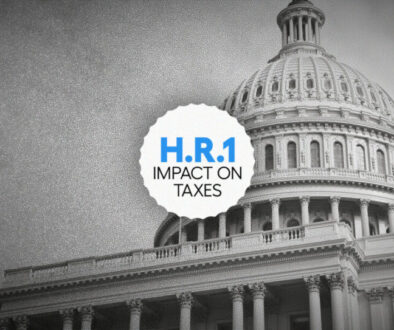Property insurers’ exodus presents challenges, opportunities
The exodus of some insurers from states badly affected by catastrophic climate-related events represents an opportunity for the carriers that remain, but comes with a need to understand the potential effect it has on customer perceptions, according to the J.D. Power 2023 U.S. Home Insurance Study.
Homeowners and renters across the country have been notified by their insurance providers that they are being dropped, as catastrophic events, rising costs and regulatory pressures have strained property and casualty insurance business models.
What is causing the exit?
There are a few factors driving carriers out of some states, according to Breanne Armstrong, director of insurance intelligence at J.D. Power. The most discussed reason, she said, relates directly to the increase in frequency and intensity of natural disasters within some states like California, Louisiana, and Florida.
It is becoming so costly and complicated to do business in some areas, that some insurers have opted to stop writing new policies in the hardest hit states, and others have started to pull out completely, issuing nonrenewal notices to their existing customers in those states, Armstrong added. Many smaller insurers have become insolvent over the past two years. They are unable to sustain the business with the mounting losses due to the severity and increasing number of property claims within the state.
But it is also important to consider the impact of regulations within some of these states, Armstrong pointed out. States like California and Florida are more heavily regulated, requiring prior approval from the state’s insurance commission to raise rates.
These regulations create a double-edged sword for consumers, as they offer protection against unchecked rate hikes, but have been a major contributor to insurers pulling out of these states, leaving consumers with fewer options.
“Not being able to raise rates to adequately cover the cost of doing business can leave insurance companies high and dry, forcing them to make tough decisions about the efficacy of writing home policies in those states,” Armstrong said.
Another less discussed factor is that some states ban or limit the use of credit scores to determine auto and home insurance rates. This creates another barrier for insurers to adequately account for risk when setting premiums, she added. Although this isn’t the top contributor of the carrier exodus, these additional complications of doing business in some areas continue to accumulate.
Impact of the exodus on agents
This exit has created a host of challenges and opportunities for agents. Captive agents are in a delicate situation in states where they can no longer sell homeowners or renters policies, which becomes further exacerbated if they have existing customers who are receiving nonrenewal notices, said Armstrong. This puts their relationship with these customers at risk, especially with those who bundle their auto policies with their home or rent policies and want to continue to do so. These customers may have no choice but to look elsewhere for coverage.
Independent agents have more flexibility in shopping around for their customers, added Armstrong. But even with that advantage, they may still need to mitigate the impact of their customers’ negative experiences resulting from being dropped.
And all agents should be prepared for a potential halo effect on consumer trust and perception of insurance companies, and not just in the states that have been the most impacted by carrier exits, added Armstrong. Media coverage of insurance companies leaving states has increased over the past six months. Since these carriers are well-known brands, this has the potential of sticking with consumers.
But the carrier exit isn’t all bad news. For agents who work with carriers that are staying in these states, there is potential to bring in new business, according to Armstrong. “Although these prospective customers may live in higher risk areas, that doesn’t necessarily mean they aren’t high-value customers and could be an asset to the agent’s book of business,” she said.
Other key findings of the survey
Additional findings from the survey include:
Overall satisfaction is flat as rates start to increase: Overall homeowner satisfaction is 819 (on a 1,000-point scale), which is flat vs. 2022, and renter satisfaction increases one point this year. Average filed rate increases for home insurance have been in the double digits each month since February 2023, and nearly half (48%) of homeowners insurance customers affected by a rate filing received a rate increase of 5% or more in 2022.
Statewide pull-outs can negatively affect customer satisfaction and trust: Insurers that absorb new customers in states where other carriers are exiting will have an opportunity to expand their market share but may struggle to immediately build strong levels of trust and customer satisfaction. Overall customer satisfaction with homeowners’ insurance is at its highest when customers have a tenure of 8 years or more. Less-tenured homeowners insurance customers are significantly less satisfied with their overall experience, less likely to renew with their existing carrier and less likely to be an advocate of their existing carrier.
Price sensitivity drives shopping and limits bundling: 57% majority of homeowners who switched carriers in the past year did so for a better price. Among those who have switched insurers within the past year, bundling rates declined 10 percentage points. Bundling auto and home policies is also less prevalent in states like Florida, California and Louisiana, which have been focal points for large-scale carrier exits.
Enhancing customer satisfaction
Agents can take several steps to raise the level of customer satisfaction. Armstrong said that they can:
Provide their customers with information. Transparency is key. For example, when customers experience a rate increase initiated by the insurer, those who receive an explanation of why their rates went up are much more satisfied than those who don’t get an explanation.
Offer to review their current policies and coverage. “Are they getting all the discounts available to them? Is there a policy that would be a better fit for their situation, like a usage-based insurance auto policy?” Armstrong asked.
Help customers to fully understand their insurance policies, including their coverage and documents like their billing statements and/or policy declaration.“Taking these steps not only enhances satisfaction, but also builds trust with both the agent and the insurer,” Armstrong said.
Property insurers ranking
In addition, the study pointed out that Erie Insurance ranks the highest in the homeowners- insurance segment, with a score of 856. Amica (844) ranks second and Auto-Owners Insurance (834) ranks third.
Erie Insurance also ranks the highest in the renters’ insurance segment with a score of 881. American Family (856) ranks second and Lemonade (854) ranks third.
The U.S. Home Insurance Study examines overall customer satisfaction with two distinct personal insurance product lines: homeowners and renters.
Satisfaction in the homeowners’ and renters’ insurance segments is measured by examining five factors: interaction; policy offerings; price; billing process and policy information; and claims.
The study is based on responses from 11,221 homeowners and renters via online interviews conducted from May through July 2023.
Ayo Mseka has more than 30 years of experience reporting on the financial services industry. She formerly served as editor-in-chief of NAIFA’s Advisor Today magazine. Contact her at amseka@INNfeedback.com.
© Entire contents copyright 2023 by InsuranceNewsNet.com Inc. All rights reserved. No part of this article may be reprinted without the expressed written consent from InsuranceNewsNet.com.
The post Property insurers’ exodus presents challenges, opportunities appeared first on Insurance News | InsuranceNewsNet.



